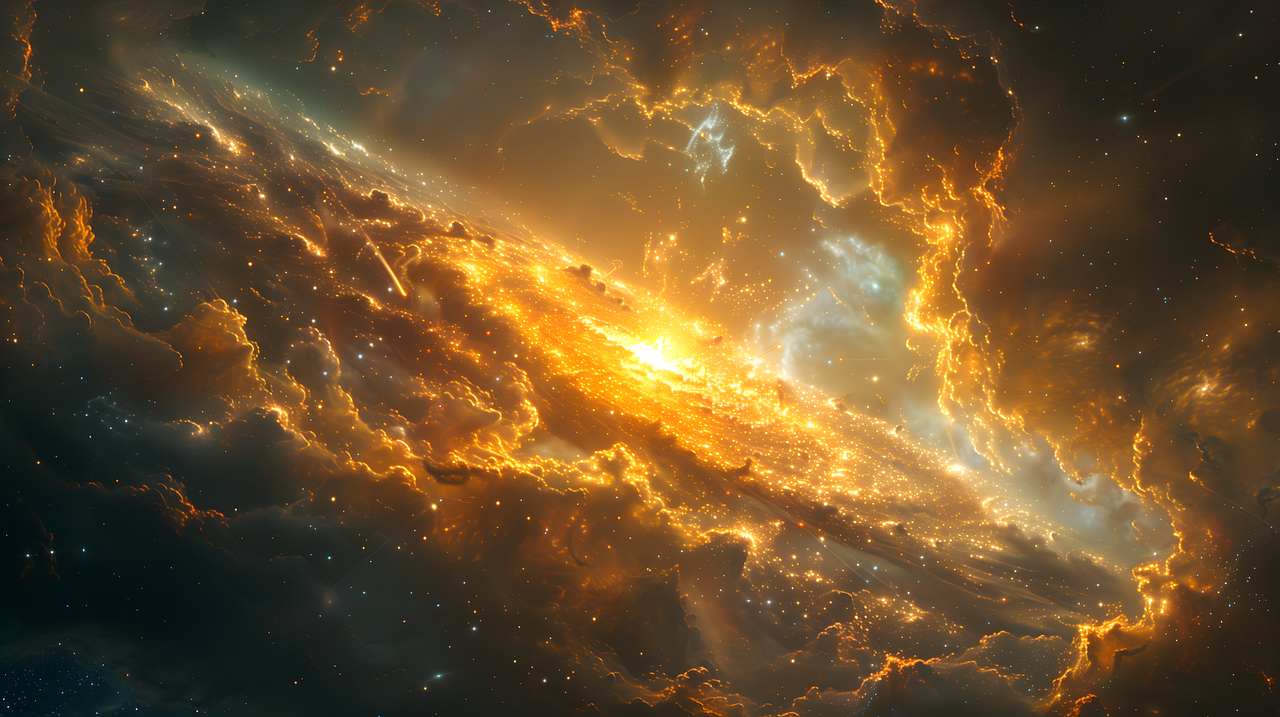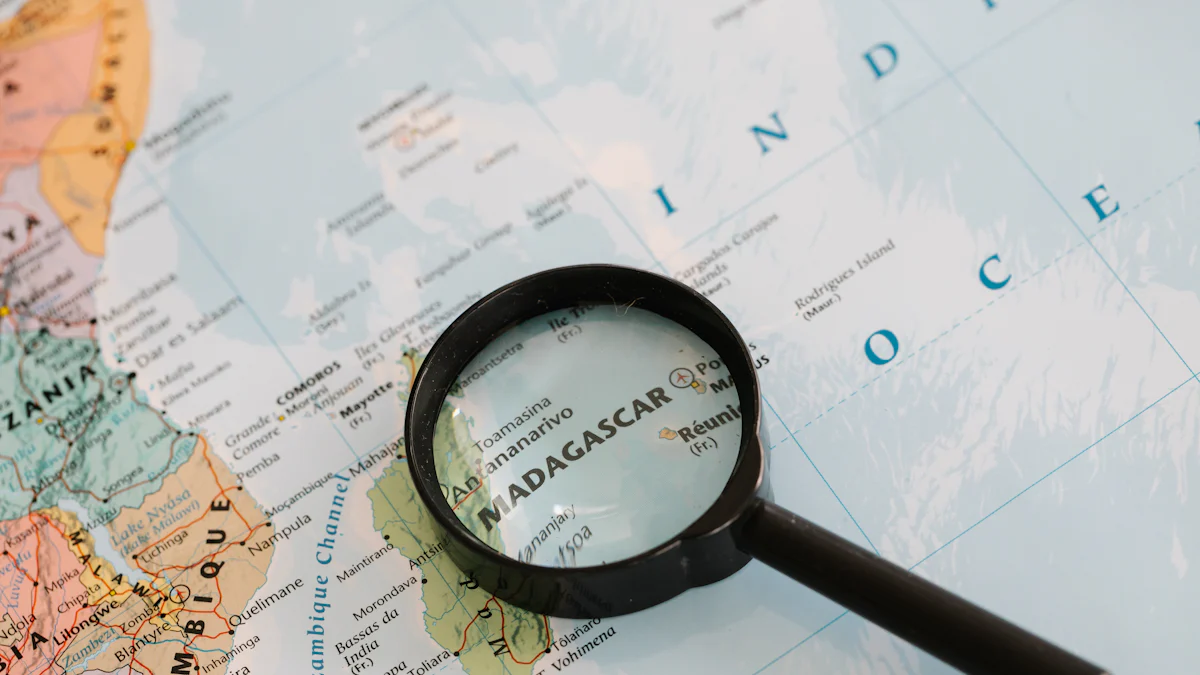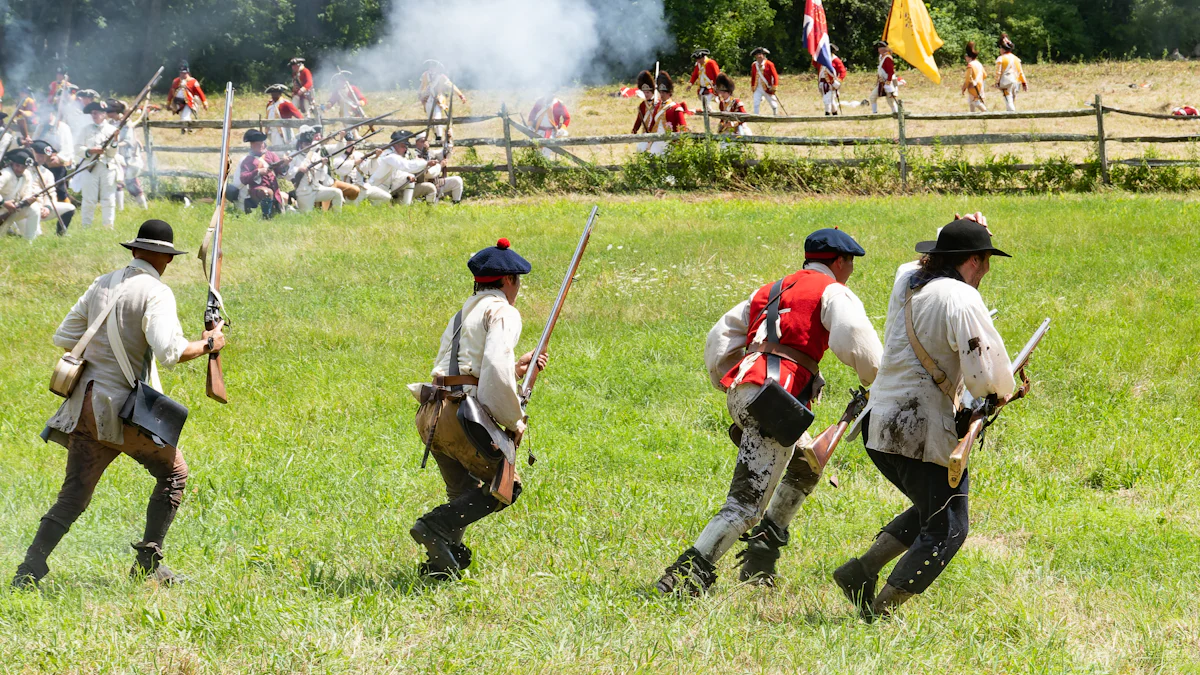Timelines of Everything

Did you know that the universe's history began with a monumental event called the Big Bang? This occurrence, happening 13.7 billion years ago, marked the start of time itself. The Big Bang wasn't an explosion in the usual sense but a phase when the universe was incredibly hot and dense. This moment laid the groundwork for the formation of galaxies, stars, and eventually our own solar system. The timelines of the universe reveal a captivating journey through cosmic history, inviting readers to delve into the extensive history of our world.
The Beginning of Time
The Big Bang
Formation of the Universe
The universe began with a monumental event known as the Big Bang. Scientists estimate this occurred around 13.8 billion years ago. During this time, the universe expanded rapidly. This phase, called the Era of Inflation, saw the universe grow by an immense scale. Hydrogen and helium formed soon after, setting the stage for everything to come.
Early Galaxies and Stars

About 180 million years after the Big Bang, hydrogen and helium collapsed into massive spheres. These spheres became the first stars. This period is known as the Cosmic Dawn. Stars grouped together to form early galaxies. These galaxies illuminated the universe, marking a new chapter in cosmic history.
Prehistory
Emergence of Life
Life on Earth began billions of years ago. Simple organisms appeared in the oceans. These organisms evolved over time. Complex life forms emerged, leading to diverse ecosystems. This evolution marked a significant milestone in Earth's history.
Rise of Early Humans
Early humans appeared millions of years ago. These ancestors adapted to various environments. They developed tools and learned to control fire. Over time, early humans formed communities. These developments laid the foundation for modern civilization.
The Ancient World
Early Civilizations
Mesopotamia and Egypt
Mesopotamia, known as the "Cradle of Civilization," saw the development of the first written languages by the Sumerians. These early people created cuneiform script, which allowed for record-keeping and storytelling. Mesopotamians also invented water-raising devices like the shaduf, vital for irrigation in agriculture.
Egypt flourished along the Nile River. The Egyptians built monumental structures such as the pyramids. Hieroglyphics became a significant form of writing in Egypt. The civilization thrived through advances in mathematics and medicine.
Indus Valley and China
The Indus Valley civilization emerged around 2500 BCE. This society developed urban planning with sophisticated drainage systems. The cities of Harappa and Mohenjo-Daro exemplified this advanced planning. Trade and agriculture formed the backbone of the Indus economy.
In ancient China, the Shang Dynasty marked the beginning of recorded history. The Chinese developed bronze casting techniques and oracle bone script. Agriculture and silk production became essential to Chinese society.
Classical Antiquity
Greece and Rome
Ancient Greece laid the foundation for Western culture. Greek city-states like Athens and Sparta became centers of philosophy and democracy. The Greeks excelled in art, theater, and science. The Olympic Games began in Greece as a celebration of athletic prowess.
Rome rose to power after Greece. The Romans built an extensive empire with roads and aqueducts. Roman law and governance influenced modern legal systems. Latin, the language of Rome, became the basis for many European languages.
Philosophical and Scientific Advances
Greek philosophers such as Socrates, Plato, and Aristotle explored questions of ethics and existence. Their ideas shaped Western thought. Scientific advances included the work of Archimedes and Euclid. These thinkers contributed to mathematics and physics.
In Rome, scholars like Cicero and Seneca explored rhetoric and ethics. Roman engineering achievements included the construction of the Colosseum. These contributions left a lasting legacy on architecture and engineering.
The Medieval World
The Middle Ages
Feudalism and the Church
Feudalism defined the social structure during the Middle Ages. Lords owned large estates and granted land to vassals. Vassals provided military service in return for protection. Peasants worked the land and paid taxes to the lords. This system created a hierarchy that influenced medieval society.
The Church held significant power in the Middle Ages. The Pope led the Catholic Church and influenced kings and rulers. Monasteries became centers of learning and preserved ancient texts. The Church played a vital role in education and charity. Religious beliefs shaped the daily lives of people.
The Crusades and Cultural Exchange
The Crusades were a series of religious wars. European Christians aimed to reclaim the Holy Land from Muslim control. The Crusades began in 1096 and lasted for centuries. These wars led to increased contact between Europe and the Middle East. Trade routes opened, bringing new goods and ideas to Europe.
Cultural exchange during the Crusades enriched European knowledge. Europeans learned about advanced mathematics and medicine. Arabic numerals replaced Roman numerals in Europe. New foods and spices entered European markets. The Crusades had a lasting impact on European culture and economy.
The Renaissance
Art and Science Flourish
The Renaissance marked a period of revival in art and science. Artists like Leonardo da Vinci and Michelangelo created masterpieces. Renaissance art focused on realism and human emotion. Techniques such as perspective transformed painting and sculpture.
Science experienced significant advancements during the Renaissance. Scientists like Galileo and Copernicus challenged traditional beliefs. Observations and experiments became essential in scientific study. The printing press spread new ideas quickly across Europe. The Renaissance laid the groundwork for modern science.
Exploration and Discovery
Exploration expanded horizons during the Renaissance. Explorers like Christopher Columbus and Vasco da Gama embarked on voyages. These journeys led to the discovery of new lands and trade routes. European nations established colonies in the Americas and Asia.
Discovery of new territories brought wealth and resources to Europe. Trade flourished with the exchange of goods like spices and precious metals. Maps improved as explorers charted new regions. The Age of Exploration reshaped global interactions and economies.
The Age of Exploration

Global Exploration
Voyages of Columbus and Magellan
Christopher Columbus embarked on a historic journey in 1492. Columbus aimed to find a new route to Asia. Instead, Columbus reached the Americas. This voyage marked the beginning of European exploration in the New World. Ferdinand Magellan led an expedition in 1519. Magellan's crew completed the first circumnavigation of the Earth. This journey proved the world was round. These voyages expanded geographical knowledge.
Impact on Indigenous Cultures
European explorers encountered indigenous cultures in the Americas. These encounters had significant effects. Many indigenous people faced diseases brought by Europeans. These diseases caused widespread illness and death. European colonization led to cultural changes. Indigenous societies experienced disruptions in their way of life. European settlers introduced new technologies and animals. These introductions altered indigenous economies and environments.
Scientific Revolution
Breakthroughs in Astronomy
The Scientific Revolution transformed astronomy. Nicolaus Copernicus proposed a heliocentric model. This model placed the Sun at the center of the solar system. Galileo Galilei used a telescope to observe celestial bodies. Galileo's observations supported Copernicus's theory. Johannes Kepler discovered the laws of planetary motion. Kepler's work explained how planets orbit the Sun. These breakthroughs changed humanity's understanding of the universe.
Advances in Medicine and Physics
Medicine advanced significantly during the Scientific Revolution. Andreas Vesalius published detailed anatomical drawings. Vesalius's work improved knowledge of human anatomy. William Harvey discovered the circulation of blood. Harvey's findings revolutionized medical science. Physics also saw major developments. Isaac Newton formulated the laws of motion and gravity. Newton's theories laid the foundation for classical physics. These advances shaped modern scientific thought.
The Age of Revolution

Political Revolutions
American and French Revolutions
The American Revolution began in 1775. Colonists sought independence from British rule. Key figures like George Washington led the fight. The revolution resulted in the formation of the United States. The Declaration of Independence became a symbol of freedom.
The French Revolution started in 1789. Citizens demanded equality and liberty. The monarchy faced overthrow. The revolution introduced the concept of human rights. The rise of Napoleon Bonaparte followed this period. Both revolutions inspired global movements for democracy.
Industrial Revolution
The Industrial Revolution transformed economies. Factories replaced manual labor. Innovations like the steam engine increased production. Urban areas expanded rapidly. People moved to cities for work. This shift created new social classes. The revolution paved the way for modern industry.
Cultural Shifts
Romanticism and Enlightenment
The Enlightenment emphasized reason and science. Thinkers like Voltaire and John Locke promoted knowledge. This era encouraged questioning traditional beliefs. Education and literacy rates improved. Enlightenment ideas influenced political changes.
Romanticism emerged as a reaction. Artists valued emotion and nature. Writers like William Wordsworth celebrated individualism. Romanticism highlighted personal experience. This movement affected literature, art, and music.
Changes in Society and Thought
Society experienced significant changes. The rise of factories altered daily life. Workers faced long hours and harsh conditions. Labor unions formed to demand rights. Education became more accessible. New philosophies emerged, challenging old norms.
The Russian Revolution marked a major shift. The revolution led to a communist state. Russia became a superpower in the 20th century. This change influenced global politics. The revolution demonstrated the power of collective action.
The Modern World
20th Century Transformations
World Wars and Global Conflicts
The 20th century witnessed major global conflicts. World War I erupted in 1914. Nations across Europe engaged in intense battles. The war introduced new military technologies. Trench warfare became a defining feature. World War II followed in 1939. Adolf Hitler's rise to power led to widespread devastation. The Holocaust marked a tragic chapter in history. The use of atomic bombs in Japan ended the war in 1945. These events reshaped international relations.
Technological and Social Changes
Technological advancements transformed society. John Logie Baird developed mechanical television in the 1920s. This invention revolutionized communication. The Space Race began in the mid-20th century. The launch of Sputnik by the Soviet Union marked a milestone. The United States landed astronauts on the Moon in 1969. The creation of the World Wide Web in the late 20th century connected the world. These innovations changed daily life and work.
Contemporary Era
Digital Revolution
The digital revolution redefined technology. Computers became essential tools. The internet expanded access to information. Smartphones integrated multiple functions. Social media platforms emerged as communication hubs. Digital technology influenced education and business. The rise of artificial intelligence opened new possibilities. These developments continue to shape the modern world.
Globalization and Environmental Challenges
Globalization connected economies and cultures. Trade agreements increased international cooperation. Cultural exchanges enriched societies. Environmental challenges became pressing issues. Climate change threatened ecosystems worldwide. Efforts to reduce carbon emissions gained momentum. Sustainable practices emerged in response to environmental concerns. Global collaboration remains crucial for addressing these challenges.
Thematic Timelines
Science and Technology
Key Inventions and Discoveries
Throughout history, science and technology have driven human progress. The invention of the wheel marked a pivotal moment in ancient times. This simple yet revolutionary tool transformed transportation and labor. The printing press, developed by Johannes Gutenberg, revolutionized information dissemination. Books became accessible to a broader audience, fueling education and literacy.
The Industrial Revolution introduced groundbreaking inventions. The steam engine powered factories and transportation, reshaping economies. Electricity brought light to homes and powered machines. The telephone, invented by Alexander Graham Bell, connected people across distances. These key breakthroughs set the stage for the modern world.
Impact on Society
Inventions and discoveries have profoundly impacted society. The wheel enabled efficient movement of goods and people. The printing press democratized knowledge, sparking intellectual growth. The steam engine accelerated industrialization, creating urban centers. Electricity improved quality of life through lighting and appliances.
The telephone revolutionized communication, bridging gaps between individuals. These advancements fostered global connections and cultural exchanges. Scientific discoveries continue to shape societies, influencing daily life and work. The ongoing digital revolution exemplifies this transformative power.
Fashion and Culture
Evolution of Style
Fashion has evolved significantly over time. Ancient civilizations used clothing to signify status and identity. The Middle Ages saw elaborate garments reflecting social hierarchies. The Renaissance introduced intricate designs and luxurious fabrics. Fashion mirrored cultural shifts and technological advancements.
The 20th century witnessed rapid changes in style. The flapper dresses of the 1920s symbolized liberation. The 1960s embraced bold colors and patterns, reflecting social change. Modern fashion emphasizes individuality and sustainability. Designers draw inspiration from diverse cultures and historical periods.
Cultural Influences
Culture plays a vital role in shaping fashion. Traditional attire reflects regional customs and beliefs. Globalization has facilitated cultural exchanges, enriching fashion. Designers incorporate elements from various cultures into their creations. This fusion celebrates diversity and creativity.
Fashion serves as a medium for self-expression and identity. Clothing choices convey personal values and affiliations. Cultural influences inspire trends and innovations. The interplay between fashion and culture continues to evolve, reflecting societal changes.
Espionage and Intelligence
Historical Spy Networks
Espionage has a long and intriguing history. Ancient civilizations employed spies for military and political purposes. The Silk Road facilitated the exchange of information among empires. During the Renaissance, espionage became more sophisticated. Spies gathered intelligence to gain strategic advantages.
The Cold War era saw the rise of extensive spy networks. Nations engaged in covert operations to gain geopolitical leverage. Espionage played a crucial role in shaping international relations. Historical spy networks left a lasting impact on diplomacy and security.
Modern Intelligence Agencies
Modern intelligence agencies operate globally. These organizations gather information to protect national interests. The Central Intelligence Agency (CIA) and MI6 are well-known examples. Intelligence agencies employ advanced technology for data collection and analysis.
Counterterrorism efforts rely on intelligence to prevent threats. Cybersecurity has become a critical focus in the digital age. Modern intelligence agencies adapt to evolving challenges. Their work ensures national security and global stability.
History reveals the interconnectedness of events across time. Each timeline showcases human progress and development. From the Big Bang to the digital age, every era contributes to our present and future. The visual and informative presentation of timelines offers a captivating journey through history. Readers gain insights into empires, scientific breakthroughs, and cultural shifts. Exploring these timelines sparks curiosity and a deeper understanding of the world. The book encourages further exploration, making history accessible and engaging for all ages.
See Also
Unprecedented View of History: Explore the Past Like Never Before
Civilization's Dawn to Present: A Historical Journey
Exploring World History Through Maps

